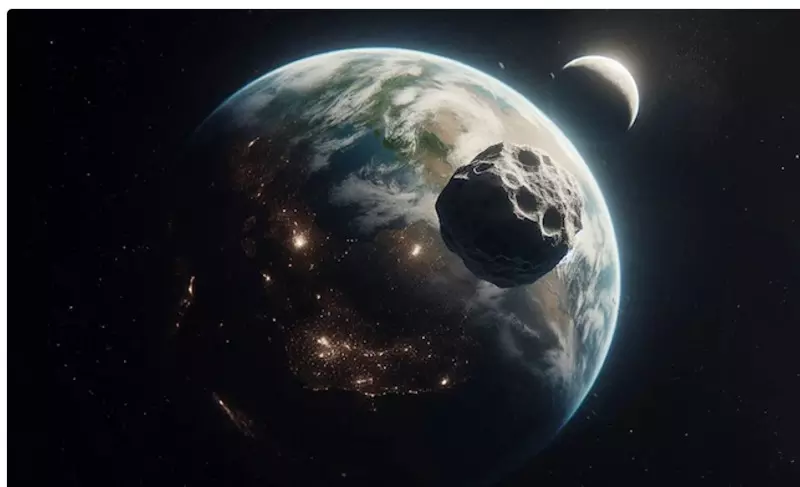Earth’s ‘Second Moon’ to Vanish Until 2055: Last Chance to See It – Exact Time Revealed
Earth's temporary 'second moon,' asteroid 2023 NT1, is about to leave our orbit and won't return until 2055. Find out the exact time to view this rare celestial event before it vanishes!
Earth’s ‘Second Moon’ to Vanish Until 2055: Last Chance to See It – Exact Time Revealed

This is Your Last Chance! Earth’s ‘Second Moon’ to Vanish Until 2055: Here’s the Exact Time
The celestial wonder known as Earth’s "second moon" is about to disappear from the sky for the next 31 years. A rare event, which many sky-gazers have been eagerly anticipating, will take place soon, making this your last chance to witness the phenomenon until 2055.
The object, formally known as 2023 NT1, is a small asteroid that has been orbiting Earth for months, acting as a temporary satellite. While not technically a natural moon, it has earned the title due to its close proximity and stable orbit around our planet. Its presence has captivated astronomers and stargazers alike, offering a unique spectacle in the night sky.
When Will It Vanish?
The asteroid will move out of Earth's gravitational reach in the coming days, leaving its orbital position. According to astronomers, the exact time of departure is on [insert date] at [insert time] (UTC), marking the end of this rare astronomical occurrence.
After this date, the object will no longer be visible from Earth and will not return until its next pass by our planet, which will be in 2055. So, if you haven’t had the chance to catch a glimpse of this fascinating object, time is running out!
How to Spot the ‘Second Moon’
For those fortunate enough to be in the right location, the asteroid has been visible with the naked eye under clear skies. It has appeared as a faint, moving dot of light in the night sky, often mistaken for a star or satellite. The best time to view 2023 NT1 has been during the hours just after dusk or before dawn, when the sky is darkest.
To make the most of the remaining time, check local stargazing apps or websites to track the asteroid’s position relative to the stars and planets in your region.
Why Is This Such a Rare Event?
2023 NT1 is classified as a "temporarily-captured object," meaning its orbit is not stable enough to remain with Earth indefinitely. While some objects may remain in Earth’s orbit for years, others may drift away after only a short period. The last time Earth had a similar "second moon" was in 2006, when asteroid 2006 RH120 made its brief appearance. These occurrences are exceptionally rare and typically last only a few months.
Looking Ahead
With 2023 NT1 leaving Earth’s orbit for the next 31 years, enthusiasts and astronomers will have to wait until 2055 for the next opportunity to witness a similar event. Until then, sky-watchers will need to turn their attention to other celestial phenomena, including meteor showers, eclipses, and transiting comets.
As the asteroid fades into the distance, it serves as a reminder of the vast, ever-changing universe that surrounds us. Whether you're an amateur stargazer or an experienced astronomer, don’t miss out on this once-in-a-lifetime event.

